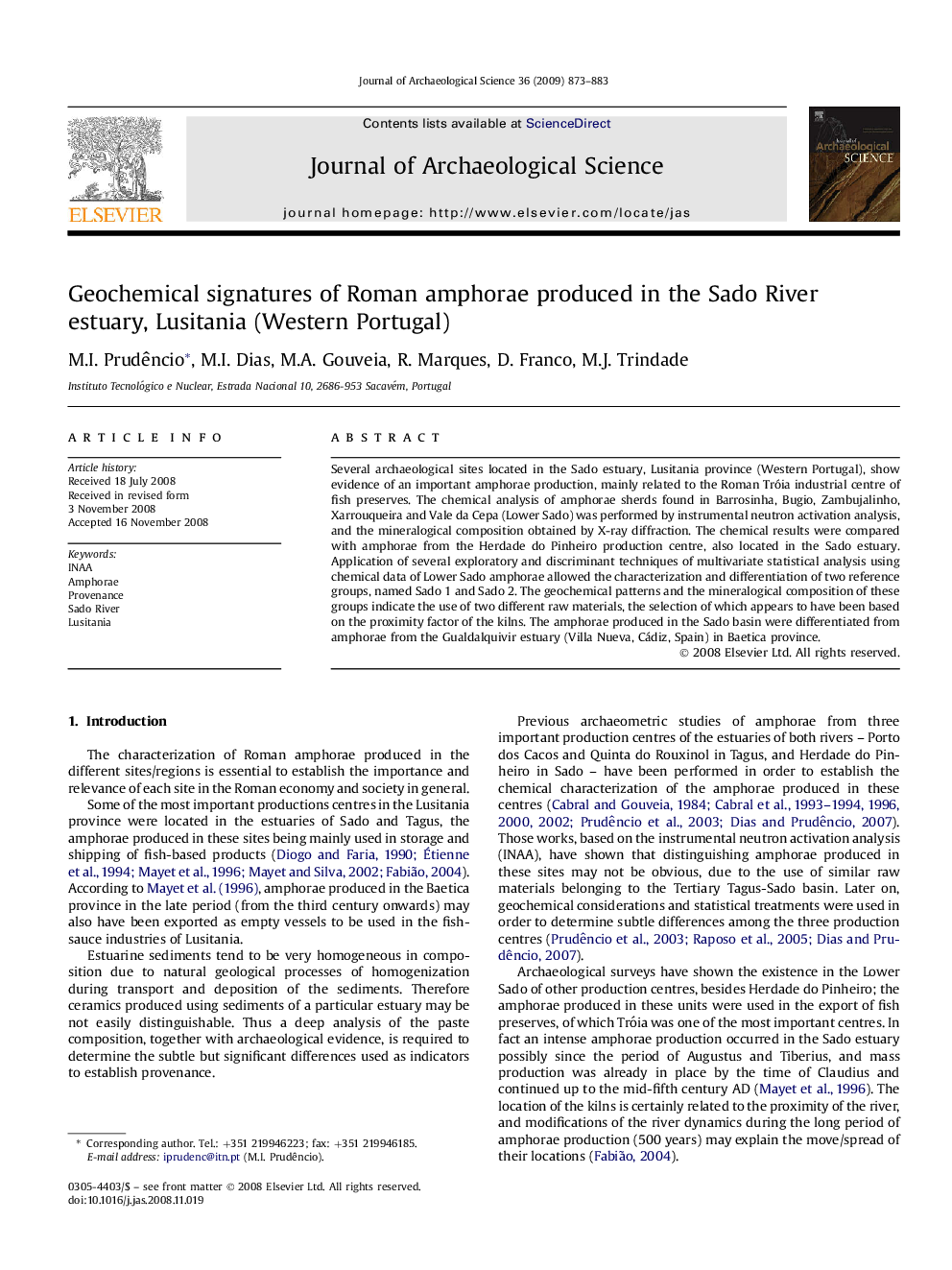| Article ID | Journal | Published Year | Pages | File Type |
|---|---|---|---|---|
| 1036826 | Journal of Archaeological Science | 2009 | 11 Pages |
Several archaeological sites located in the Sado estuary, Lusitania province (Western Portugal), show evidence of an important amphorae production, mainly related to the Roman Tróia industrial centre of fish preserves. The chemical analysis of amphorae sherds found in Barrosinha, Bugio, Zambujalinho, Xarrouqueira and Vale da Cepa (Lower Sado) was performed by instrumental neutron activation analysis, and the mineralogical composition obtained by X-ray diffraction. The chemical results were compared with amphorae from the Herdade do Pinheiro production centre, also located in the Sado estuary. Application of several exploratory and discriminant techniques of multivariate statistical analysis using chemical data of Lower Sado amphorae allowed the characterization and differentiation of two reference groups, named Sado 1 and Sado 2. The geochemical patterns and the mineralogical composition of these groups indicate the use of two different raw materials, the selection of which appears to have been based on the proximity factor of the kilns. The amphorae produced in the Sado basin were differentiated from amphorae from the Gualdalquivir estuary (Villa Nueva, Cádiz, Spain) in Baetica province.
